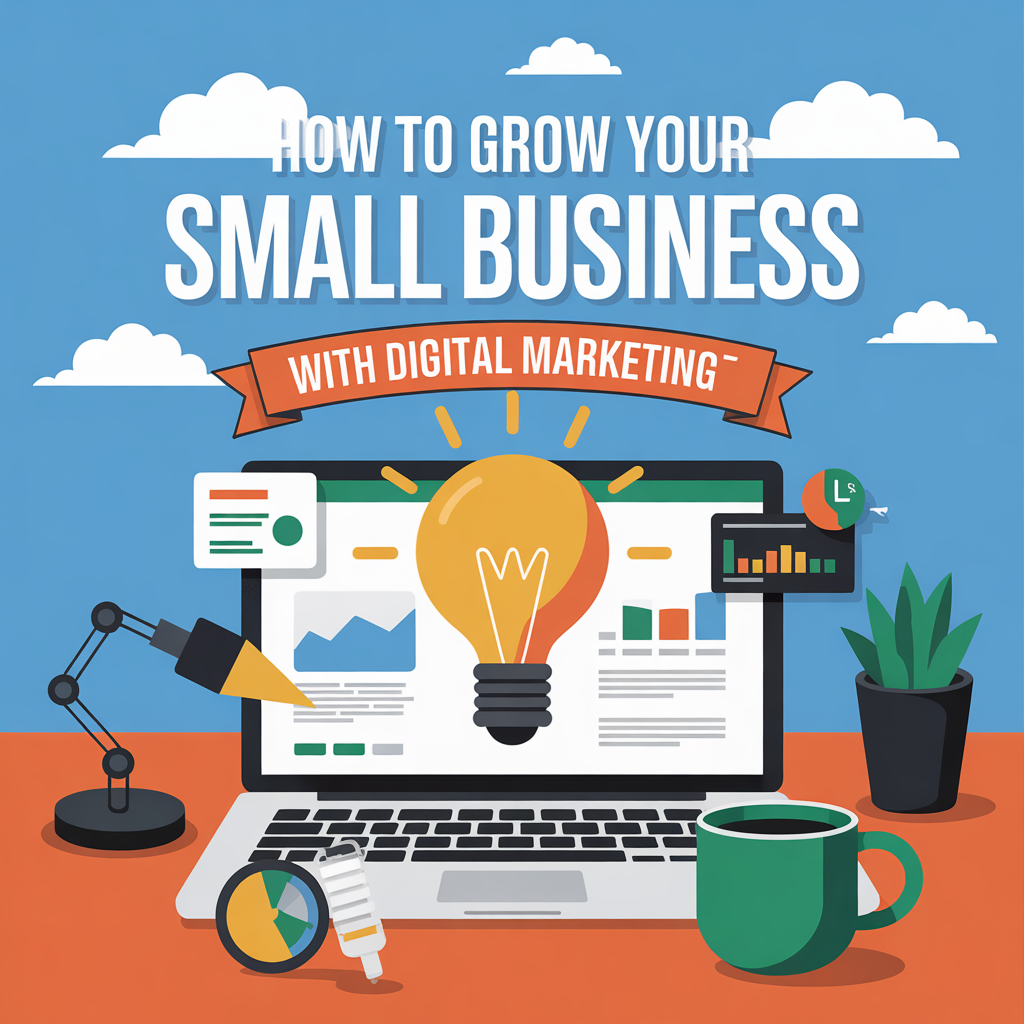In today’s digital age, growing your small business online is no longer optional—it’s essential. Digital marketing helps you reach a wider audience, build brand awareness, and increase sales. Whether you’re new to digital marketing or looking to improve your current strategy, here are some key steps to grow your small business online.
1. Build a Strong Online Presence
The first step to growing your business online is creating a solid online presence. This starts with having a professional website that showcases your products or services. Make sure your website is user-friendly, mobile-responsive, and optimized for search engines (SEO). A website that loads quickly and is easy to navigate will keep visitors engaged and encourage them to explore what you offer.
2. Optimize Your Website for SEO
Search engine optimization (SEO) is one of the most effective ways to get your business noticed online. By optimizing your website for SEO, you increase the chances of appearing at the top of Google’s search results when potential customers search for products or services like yours.
Some basic SEO strategies include:
- Keyword research: Use tools like Google Keyword Planner to find relevant keywords for your business and include them in your website content, meta descriptions, and titles.
- Quality content: Regularly update your website with informative blog posts, product descriptions, and customer reviews. High-quality content attracts both users and search engines.
- Backlinks: Getting links from other reputable websites helps improve your website’s authority and ranking.
3. Leverage Social Media
Social media is a powerful tool for promoting your small business. Platforms like Facebook, Instagram, LinkedIn, and Twitter allow you to connect with your audience, build relationships, and drive traffic to your website.
To succeed on social media:
- Post regularly with engaging content such as promotions, behind-the-scenes looks, and industry news.
- Interact with your followers by responding to comments, sharing user-generated content, and participating in relevant conversations.
- Use paid ads to target specific demographics and boost visibility.
4. Use Email Marketing
Email marketing is one of the most cost-effective ways to nurture relationships with existing customers and attract new ones. Build an email list by offering incentives like discounts or free resources in exchange for contact information. Then, send out regular newsletters, promotions, and personalized offers to keep your business top-of-mind.
5. Invest in Paid Advertising
While organic growth takes time, paid advertising allows you to see immediate results. Google Ads and social media ads are excellent tools to promote your business to a targeted audience. By setting a budget and carefully choosing your keywords and target audience, you can drive high-quality traffic to your website.
6. Track Your Results
To ensure your digital marketing efforts are working, track your results. Use tools like Google Analytics and social media insights to measure website traffic, conversion rates, and engagement. Analyzing these metrics will help you make informed decisions about where to allocate your marketing budget and which strategies to adjust.
7. Offer Great Customer Service
Your digital marketing efforts will be much more effective if you provide excellent customer service. Respond to inquiries promptly, resolve issues quickly, and make sure your customers feel valued. Happy customers are more likely to recommend your business to others, which can lead to organic growth.
Final Thoughts
Growing your small business online with digital marketing doesn’t happen overnight, but with the right strategies, you can achieve long-term success. Start by building a strong online presence, optimizing your website for SEO, and leveraging social media and email marketing. Remember to track your results, invest in paid advertising, and focus on providing excellent customer service. With time and effort, your small business can thrive in the digital world.






